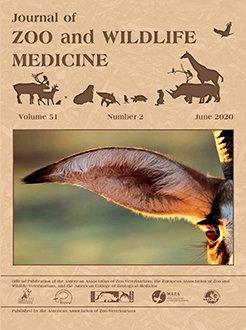Moxidectin is a commonly used lipophilic anthelmintic with activity against a wide range of nematodes. It is labeled for use in cattle by oral, topical, and subcutaneous routes. In semi-free ranging conditions, many anthelmintics are remotely administered intramuscularly due to an inability to administer by other routes without restraint. During 2015–2016, three animals including a roan (Hippotragus equinus), sable (Hippotragus niger), and Arabian oryx (Oryx leucoryx) treated with moxidectin developed clinical signs consistent with toxicosis. The primary sign was severe neurologic depression within 12 to 24 hr. Based on recommendations in domestic cases, animals were treated with intravenous lipid therapy and supportive care while diagnostic testing was performed. All three initially improved prior to succumbing to secondary problems associated with prolonged recumbency. Moxidectin has been administered remotely on 97 occasions in eight different exotic ruminant species at Fossil Rim, with only the above three cases showing clinical signs of toxicosis. Two potential causes in these cases include poor body condition leading to a smaller volume of distribution, thus allowing higher concentrations to overwhelm the blood–brain barrier, or a genetic defect similar to some herding dog breeds. Given that cases were seen in three different species at an overall low incidence within a given species, a genetic defect is considered unlikely. The animals affected did have significantly lower body condition score than conspecifics, and it is considered likely that this predisposed these animals to toxicosis. Therefore, caution should be used when administering moxidectin intramuscularly in animals in poor body condition.
How to translate text using browser tools
12 June 2020
SUSPECTED MOXIDECTIN TOXICOSIS IN A ROAN ANTELOPE (HIPPOTRAGUS EQUINUS), A SABLE ANTELOPE (HIPPOTRAGUS NIGER), AND AN ARABIAN ORYX (ORYX LEUCORYX) AT A SEMI-FREE RANGE ZOOLOGICAL PARK
Julie Swenson,
Holly J. Haefele,
Robert H. Poppenga
ACCESS THE FULL ARTICLE
Arabian oryx (Oryx leucoryx)
Intravenous lipids
moxidectin
Roan antelope (Hippotragus equinus)
Sable antelope (Hippotragus niger),Toxicosis





